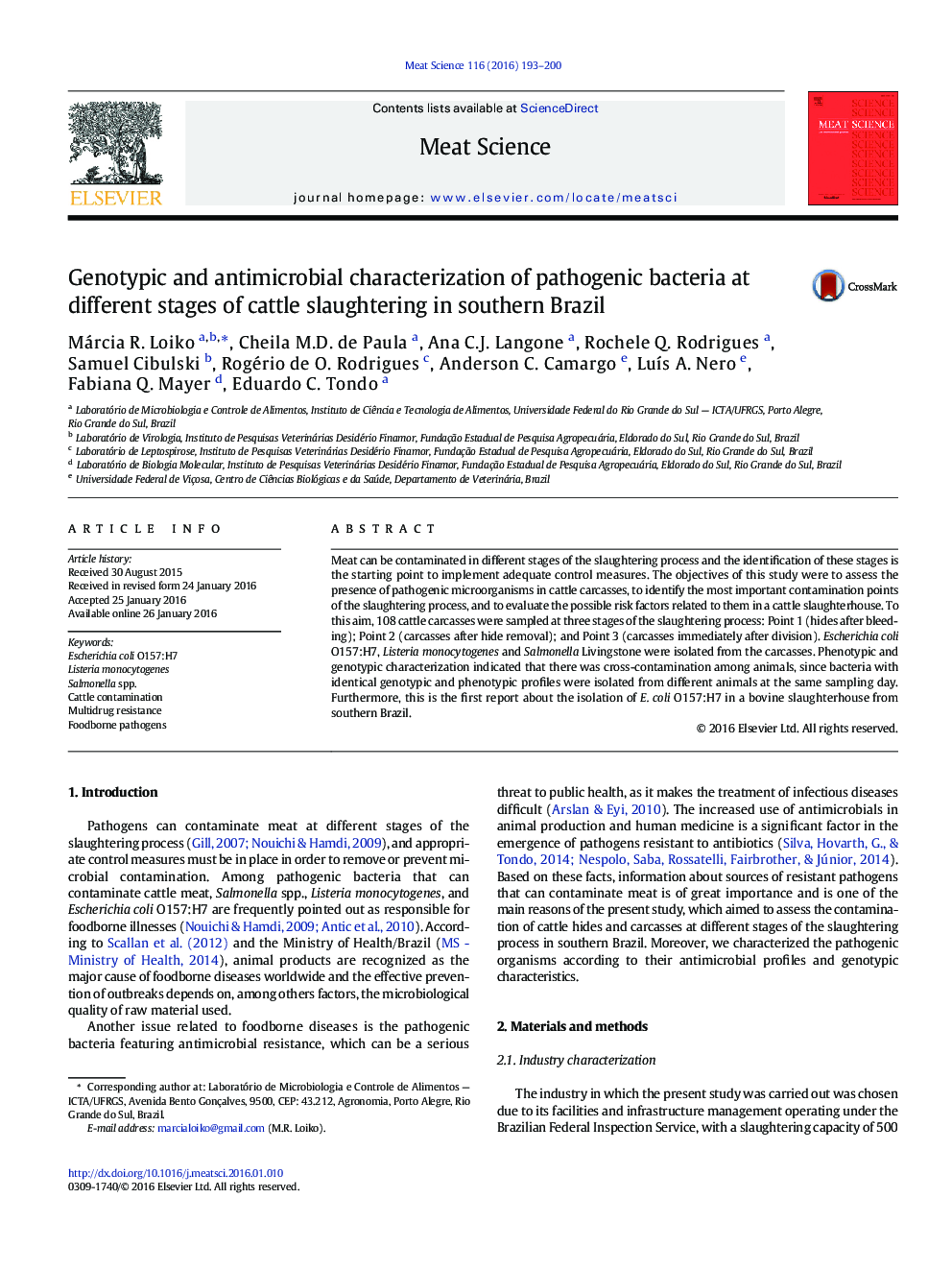| کد مقاله | کد نشریه | سال انتشار | مقاله انگلیسی | نسخه تمام متن |
|---|---|---|---|---|
| 2449540 | 1554078 | 2016 | 8 صفحه PDF | دانلود رایگان |
• Different zoonotic bacteria were isolated at a Brazilian cattle slaughterhouse.
• E. coli O157:H7, L. monocytogenes, and Salmonella were isolated mainly on animal hides.
• Several strains were multi-resistant.
• The same strain was isolated in different steps of processing, indicating cross-contamination.
• Data can be used to improve good hygiene practices at cattle slaughterhouses.
Meat can be contaminated in different stages of the slaughtering process and the identification of these stages is the starting point to implement adequate control measures. The objectives of this study were to assess the presence of pathogenic microorganisms in cattle carcasses, to identify the most important contamination points of the slaughtering process, and to evaluate the possible risk factors related to them in a cattle slaughterhouse. To this aim, 108 cattle carcasses were sampled at three stages of the slaughtering process: Point 1 (hides after bleeding); Point 2 (carcasses after hide removal); and Point 3 (carcasses immediately after division). Escherichia coli O157:H7, Listeria monocytogenes and Salmonella Livingstone were isolated from the carcasses. Phenotypic and genotypic characterization indicated that there was cross-contamination among animals, since bacteria with identical genotypic and phenotypic profiles were isolated from different animals at the same sampling day. Furthermore, this is the first report about the isolation of E. coli O157:H7 in a bovine slaughterhouse from southern Brazil.
Journal: Meat Science - Volume 116, June 2016, Pages 193–200
